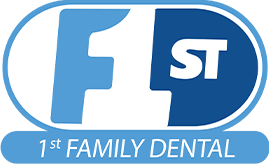Dental extractions are, put simply, the removal of a tooth from the mouth. Extractions are most often performed because a tooth has sustained damage or decay, or cannot be saved by Root Canal treatment, to prepare for the placement of a Dental Implant. Advanced gum disease may be another contributing factor to tooth extractions. Other reasons for extractions include making space in the mouth for braces or other orthodontic treatment, or in the case of children or pediatric patients, to allow room for adult teeth to grow.
To learn about Wisdom Tooth extractions, please click here.
Dental extractions are classified in two ways: Regular or Standard Extractions, and Surgical Extractions.
A tooth that has fully erupted through the gum line can usually be removed as easily as any other tooth via a regular extraction.
A wisdom tooth or other tooth that is impacted or is still under the gumline or embedded in the jaw bone may require a surgical extraction, which is a form of oral surgery. A surgical extraction means your dentist will make an incision along your gum line to expose the tooth, and remove any bone that is still covering the tooth to allow it to be removed. Your dental insurance may cover all or a portion of surgical tooth extractions.
Your dentist may recommend to extract one tooth at a time, or focus on one area of your mouth at a time. Before the dentist removes the tooth, he or she will numb the surrounding tissue with a local anesthetic. If you or a loved one have experienced dental anxiety in the past, your dentist may utilize Nitrous Oxide, known as laughing gas during the procedure, or may have prescribed an oral sedative to help you relax.
Once the area has been numbed, the dentist will remove the tooth, control any bleeding, and if necessary may use [sutures], or stitches, to close the gums. Your dentist may prescribe or recommend over the counter medications to help control any post-procedure pain or swelling.
Post-Extraction Recovery
It is very important for patients to follow the dentist’s post-procedure recovery instructions, which include avoiding smoking, chewing hard or tough foods, and strenuous physical activity for a period of time to allow the gums and jaw to heal.
If Nitrous Oxide or local anesthetic only was used during the extraction, you will be able to drive yourself home if you’d like. If a prescription sedative or anti-anxiety medication was used, you will need to have a friend drive you home. After an extraction, some pain and swelling can be expected for a while. Your dentist will tell you what you might expect, and also let you know when it may be a good idea to call the office to report if you are experiencing any problems beyond what is normally expected, such as bleeding or a dry socket.
Once the healing process is complete, people who have had tooth extractions can get right back to life as usual.
Having a healthy smile is directly related to having a healthy body. Strong teeth are an essential part of a healthy smile. There are several effective tooth replacement options available to consider following an extraction. Dental implants are the best possible tooth replacement option and have become a very accessible and affordable option for many people. Other options include dental bridges and full and partial dentures, which can be either removable or fixed to dental implants.



